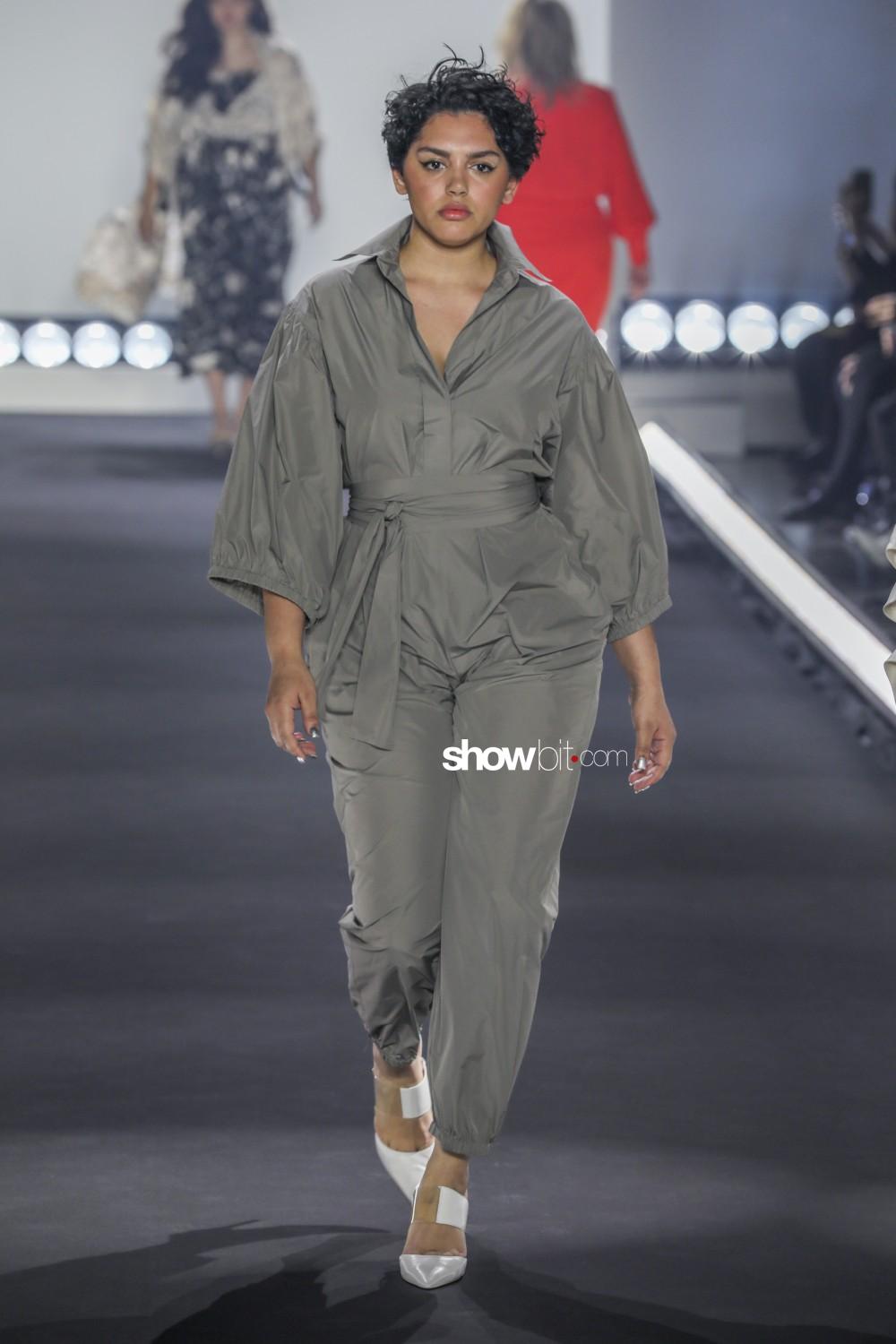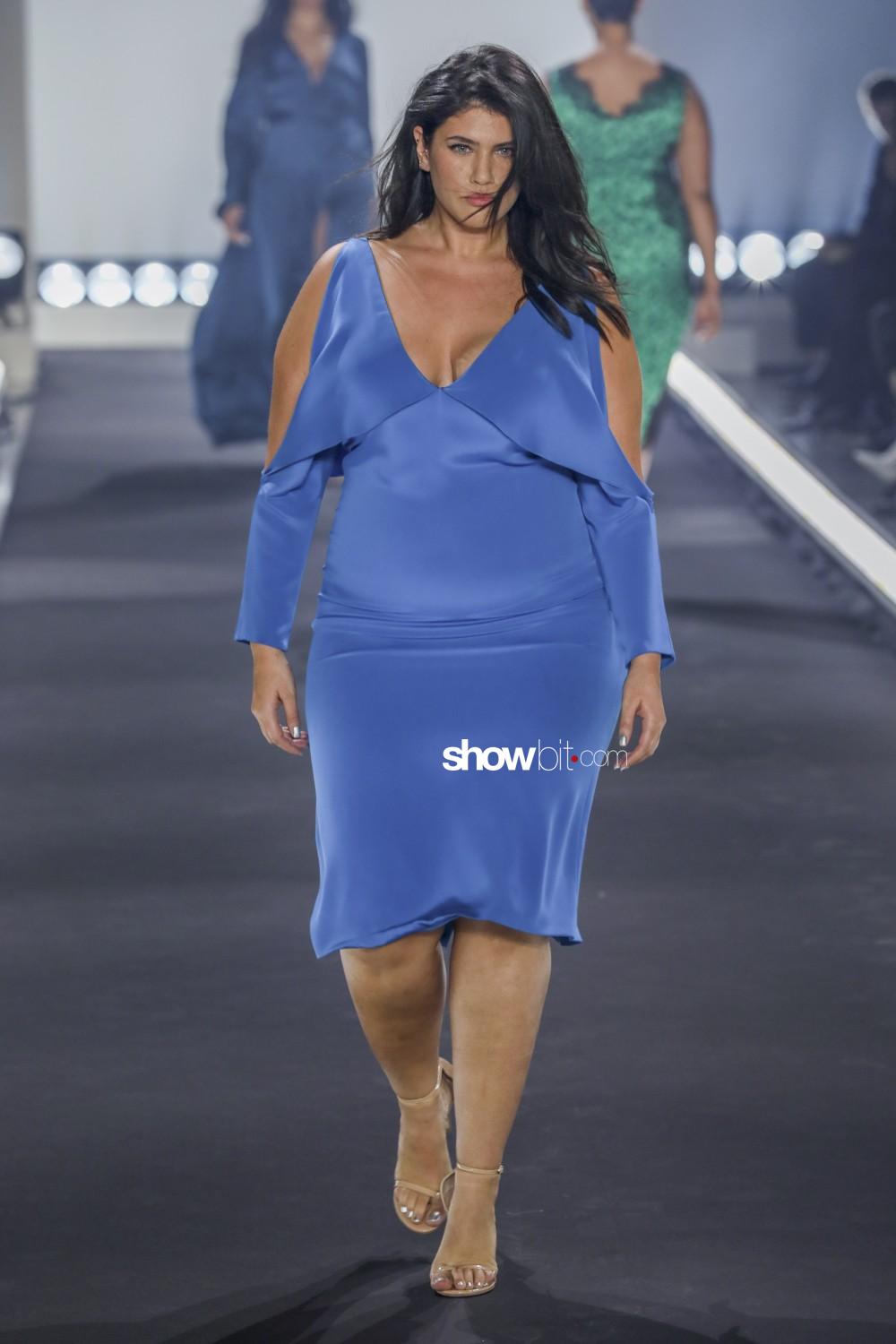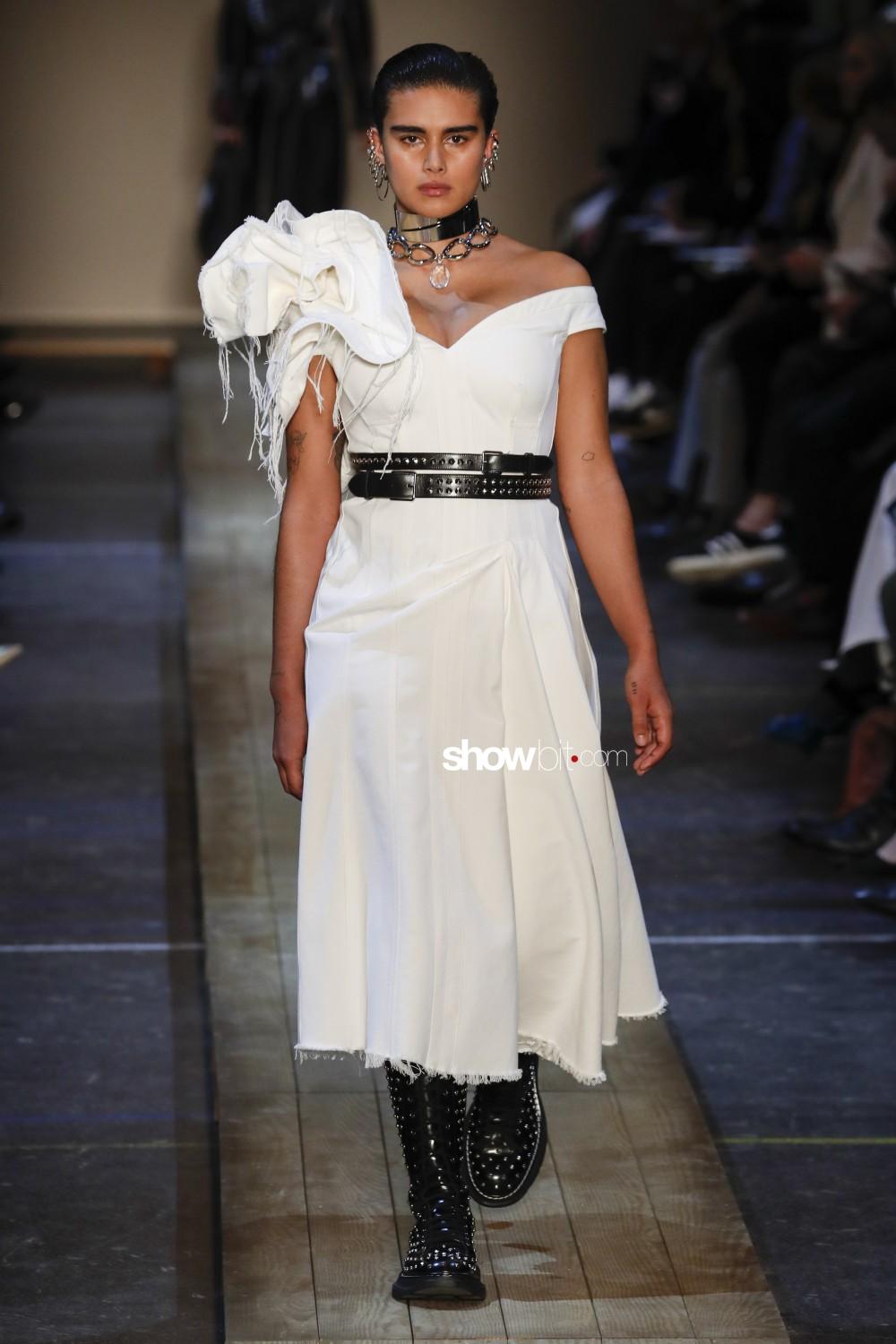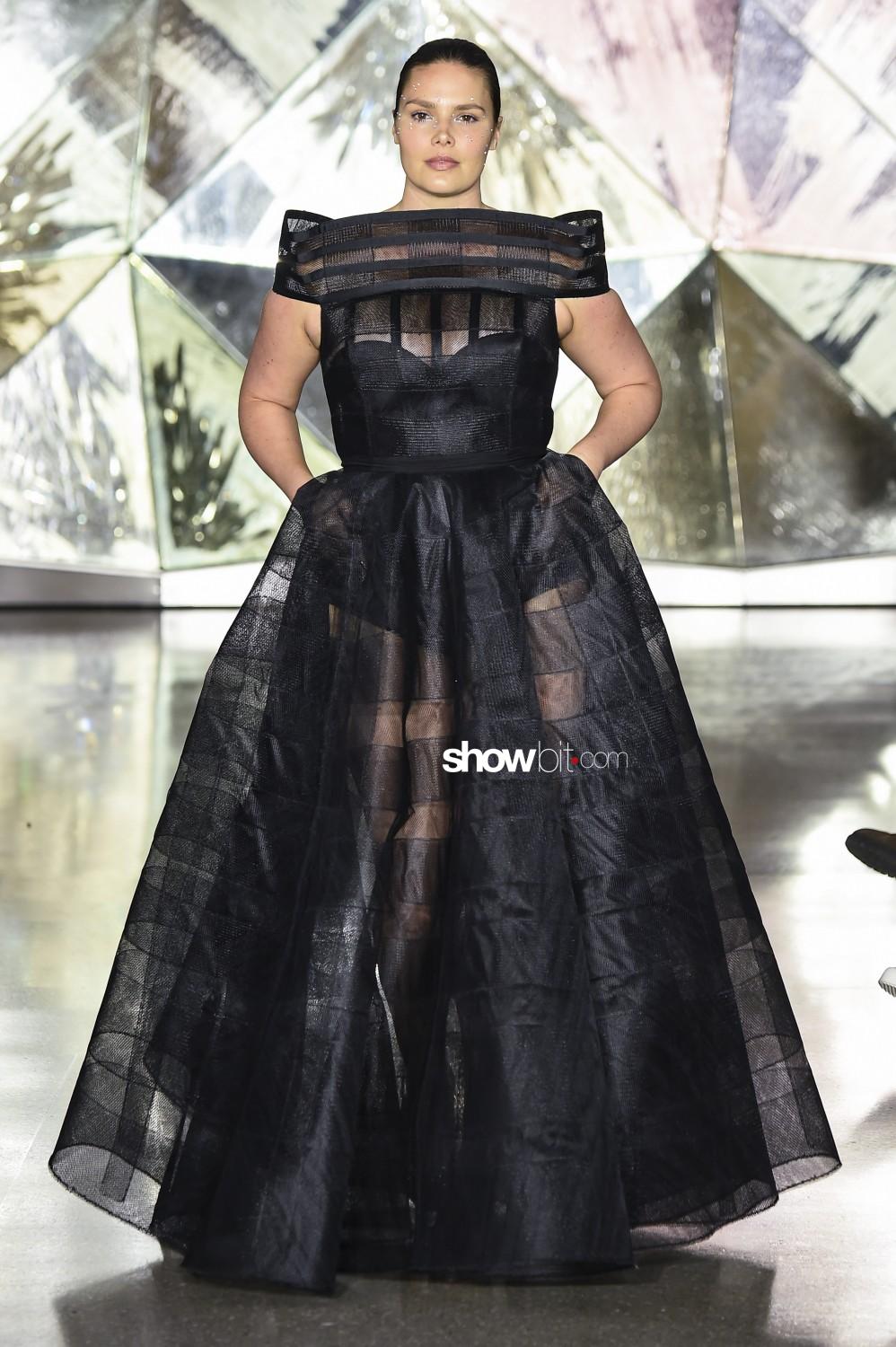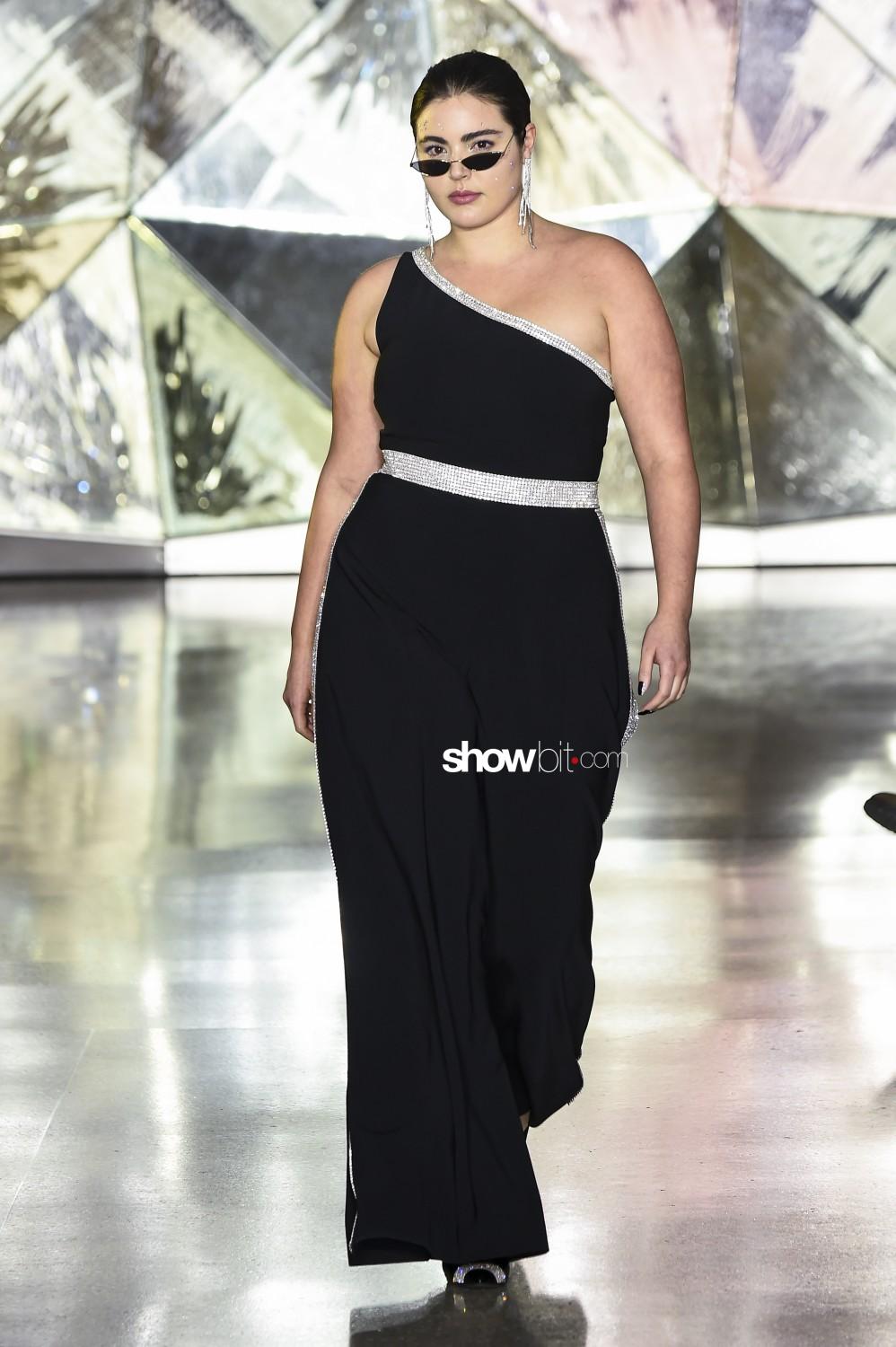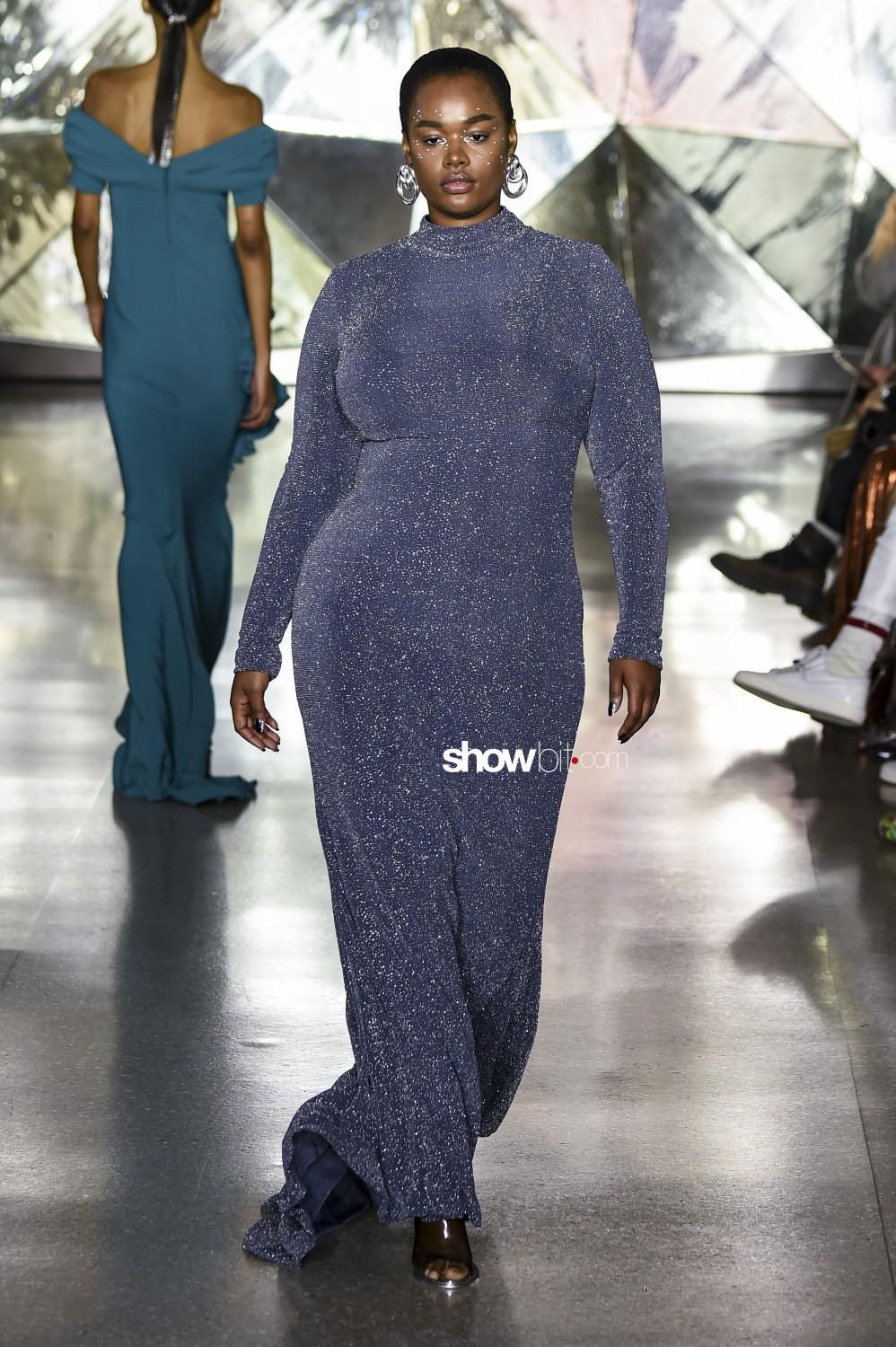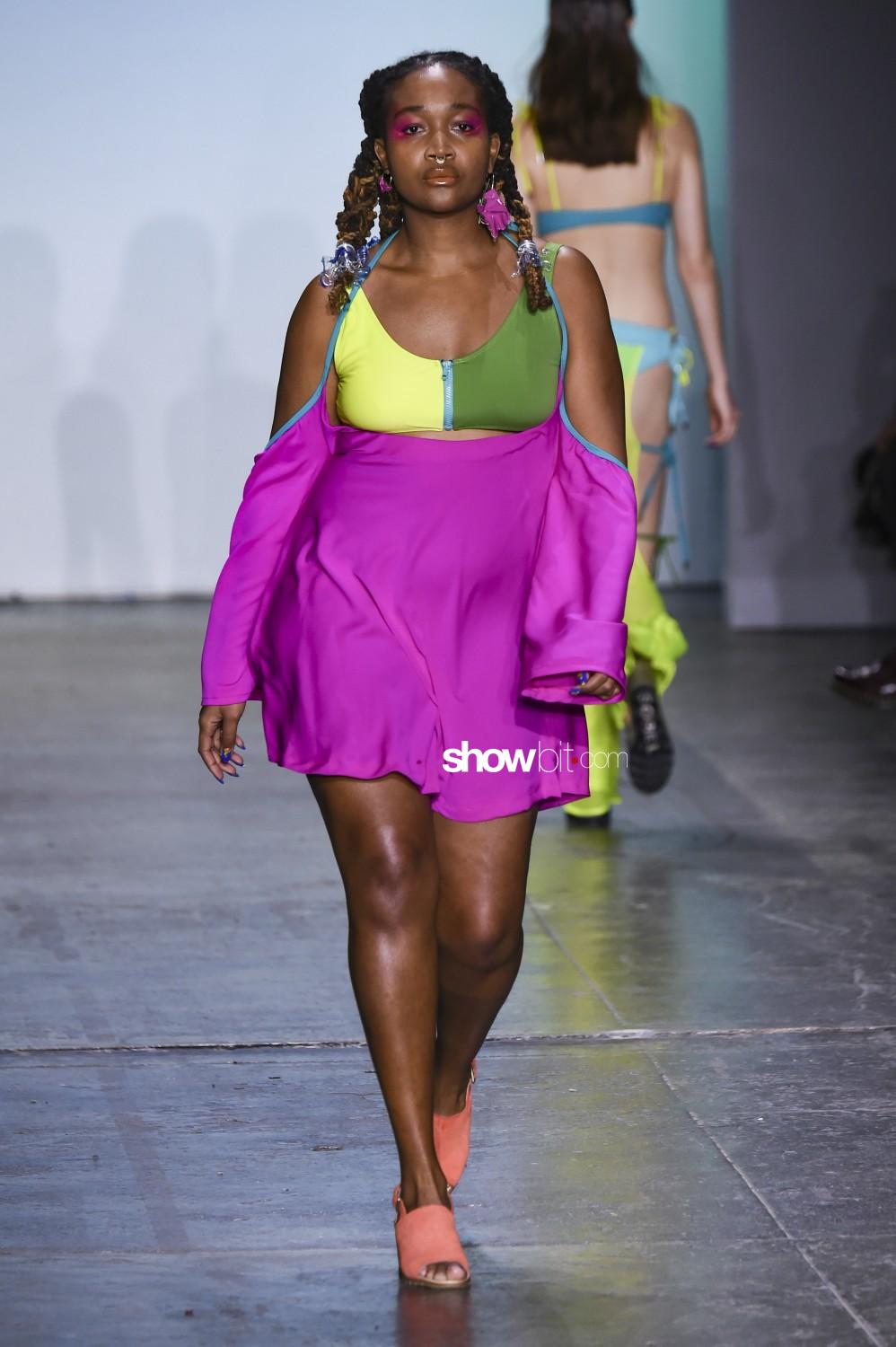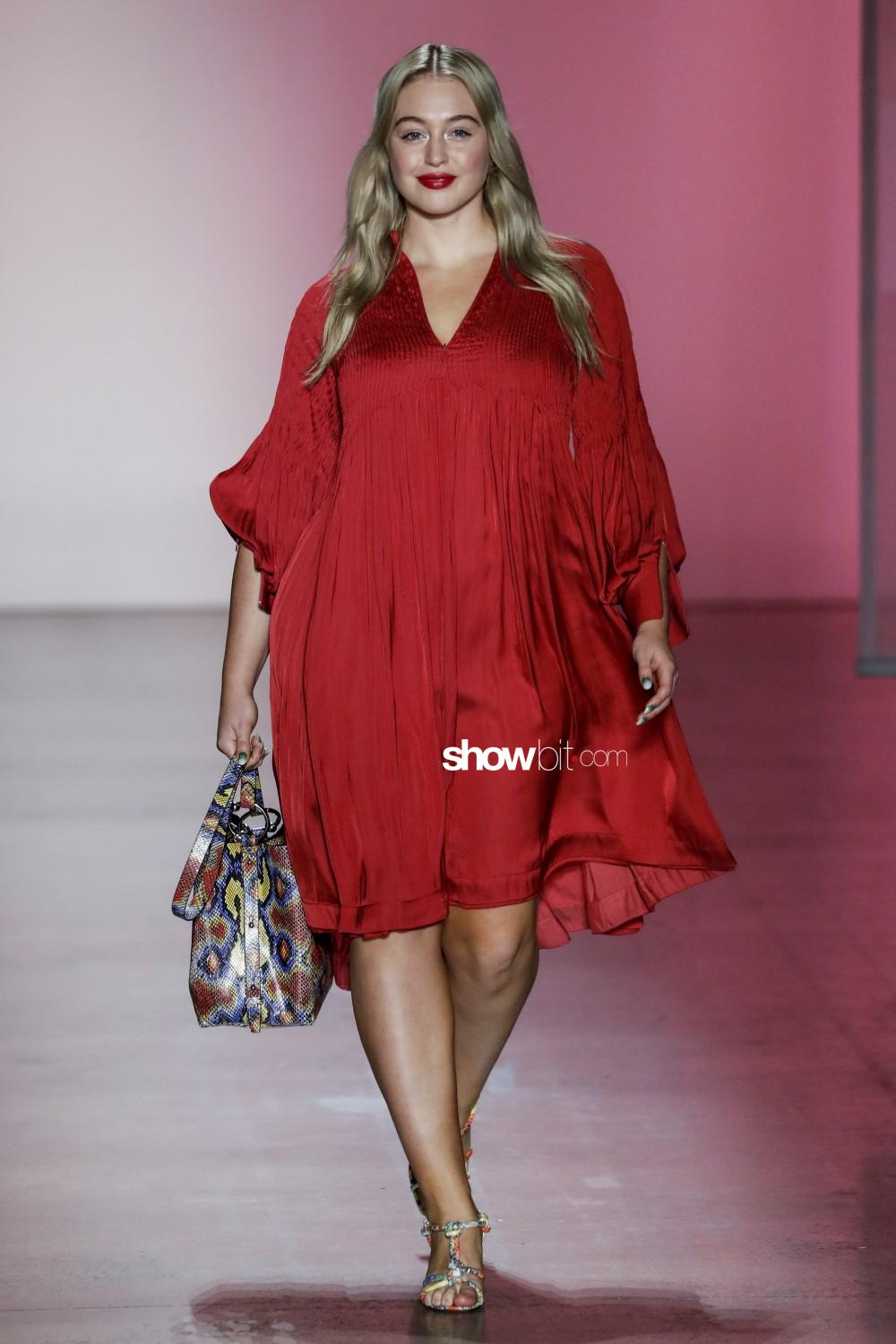Find the entire collections:
11 Honore – Man Fall Winter 2019 – New York
Christian Siriano – Women Fall Winter 2019 – New York
Alexander McQueen – Women Fall Winter 2019 – Paris
Chromat – Women Fall Winter 2019 – New York
Rebecca Minkoff – Women Fall Winter 2019 – New York
Find more curvy models on database!
The oversized real woman
Many acronyms for one single concept: call her BBW (big beautiful woman) or queen-sized, mellowy curvy or more intriguingly rubenesque, it is indisputable that the plus-size woman has been excluded from the fashion spotlight for a long time so far.
The origin of the dream of the perfect body has to be placed in the very Industrial Revolution, when the automatization of production compelled the bodies to fit into standard-sized clothing – while any body imperfection wasn’t a problem when clothing was artisanally custom-made. The ideal of proportion, harmonic symmetry and perfect beauty got then a foothold. It was decisively put on the pedestal by the arrival of Haute Couture and Prêt-à-Porter, going hand in hand with a growing fatphobic attitude; on the other hand, it provoked an increase of anorexia deseases among young women, aiming for the ideal beauty celebrated by fashion. Clothes and prosthesis covered massive and unbearable shapes, diets and treatments were neaded to manipulate bodies: they had to be “educated”, repaired, restructured and conformed to social and aesthetic criterions, in order to avoid social stigmatization.
It is undeniable that fashion has recently made great strides in terms of anti-anorexia on catwalks, in order to defend a healthier beauty: the loi mannequins, fixed by Hollande’s French government in 2017 -following other countries as Belgium, Spain and Italy- is a measure that aims at precluding the shows to the pathologically slim sizes, requiring the models’ health certificates and committing also in mentioning when a fashion commercial photograph is graphically retouched.
As a result, more accepted is now the curvy, “imperfect” body, that becomes a fashion-colonised territory: the latest fashion weeks are the proof for that, due to the fact that more and more plus-size models are walking the catwalk. Difference is emphasized, as well as the “natural” and the “flawed” that creates a unique beauty, in favor of cultural inclusivity. Fashion needs to serve the contemporary woman, to recognise her body as a real structure, with its dynamic and variegated life choices. Fashion in fact cannot turn a deaf ear from the diffusion of overweight among population. A factual data is that the 70’s and 80’s reported an exponential increase in obesity all over the world: Anglo-saxon nations hold the overweight records, with the United States in front.
The ideal of the sporty, athletic body is certainly not called into question, but it now happily goes hand in hand with the plus-sized body, even in the same fashion shows, while for many decades oversize fashion has been displayed separatedly from the mainstream fashion channels.
If body cycles are the evidence of a more profound social change than the kaleidoscopic cycles of fashion, we’re facing a decisive moment of the oversize’s cultural release, a public acceptance of what is an imperfect, real body.
Take a look at our selection of some curvy models that walked the Fall 2019 catwalks!
These photos are only a low resolution demonstration.
If you want to use the hight resolution, you must subcribe to our images database. You may ask us any commercial information simply filling out our Contact Form. For editorial use only.
Follow us with the hashtag #showbitcom


